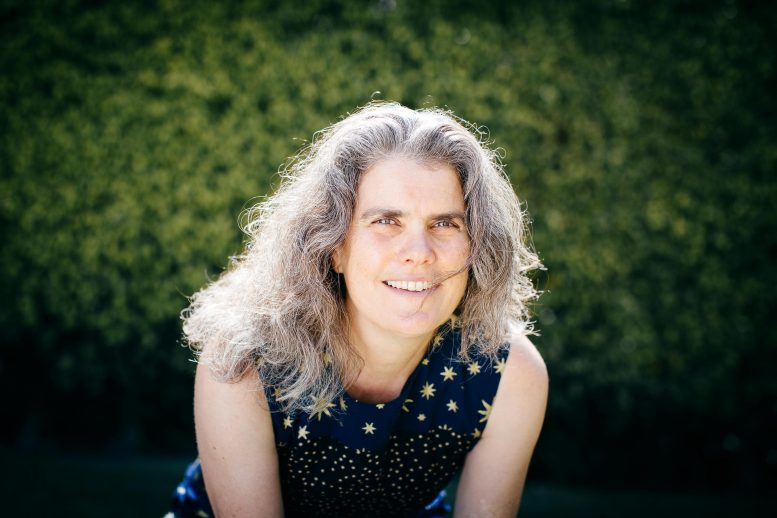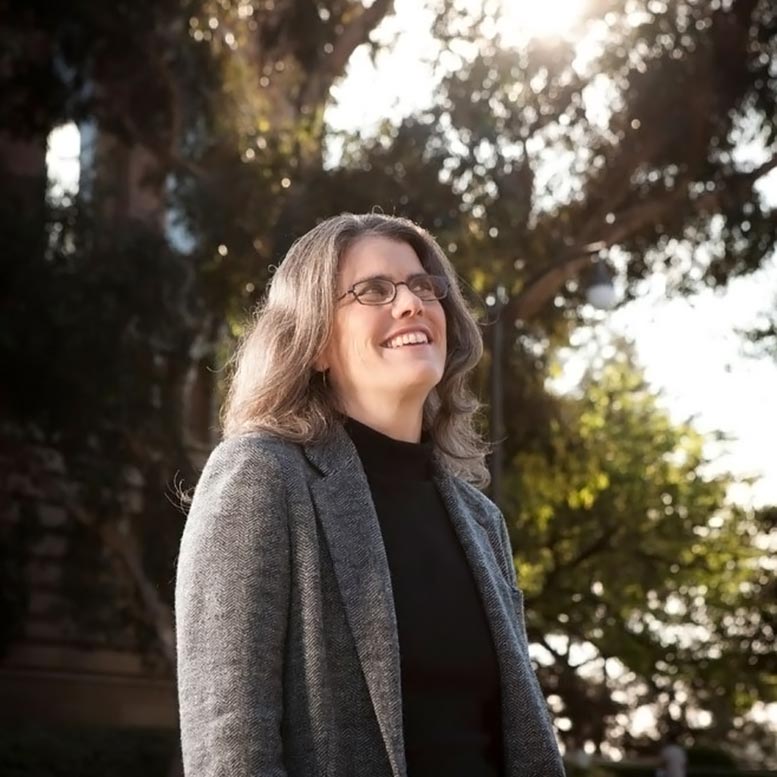Andrea Ghez. Photo credit: Christopher Dibble / UCLA
Andrea Ghez (Caltech MS ’89, PhD ’92), Lauren B. Leichtman and Arthur E. Levine, Professor of Astrophysics at UCLA, received the 2020 Nobel Prize in Physics for groundbreaking research that helped uncover a supermassive black hole lurks in the middle of the Milky Way Galaxy. She shares half of the Nobel Prize with Reinhard Genzel from UC Berkeley and the Max Planck Institute for Extraterrestrial Physics. Ghez and Genzel are jointly honored “for the discovery of a supermassive compact object in the center of our galaxy”.
The other half of the Nobel Prize goes to Roger Penrose from the Oxford University“For the discovery that black hole formation is a robust prediction of general relativity.”
“It was a pleasure to hear the news this morning. The Nobel Prize recognizes results that build on Andrea’s years of excellent, precise and pioneering observations at the WM Keck Observatory, ”says Anneila Sargent (MS ’67, PhD ’77), Ira S. Bowen, Emeritus Professor of Astronomy at Ira S. Bowen Caltech. “From her studies at Caltech, it was clear that Andrea had what it takes to make a name for herself.”
At Caltech, Ghez’s PhD advisor was the late Gerry Neugebauer (PhD ’60), former Robert Andrews Millikan professor emeritus of physics and founder of the field of infrared astronomy. Ghez’s doctoral thesis dealt with the abundance of multiple star systems and star evolution using Caltech’s Palomar Observatory. She was named a Caltech Distinguished Alumna in 2012.

Andrea Ghez is the eighth faculty member at UCLA to be named a Nobel Laureate. Recognition:
Elena Zhukova / University of California
At UCLA, where Ghez joined the faculty in 1994, she and her team began mapping stars in a region in the center of our galaxy known as Sagittarius A *, around which all the stars in the Milky Way orbit. Ghez and her co-winner Genzel independently developed methods to better see through the dark clouds of dust that block Earth’s view of the heart of the galaxy. Ghez helped advance the adaptive optics techniques used at the WM Keck Observatory in Hawaii. The adaptive optics corrects the turbulent earth atmosphere and produces sharper images.
The work of Ghez and Genzel to map the orbits of the stars around Sagittarius A * has, according to the Nobel Prize press release, helped to reveal “an extremely heavy, invisible object that pulls on the jumble of the stars and lets them storm around at dizzying speeds” . This research has shown that the central invisible object, with a mass equivalent to that of 4 million suns, is a supermassive black hole. Supermassive black holes are much heavier than the stellar mass holes that are distributed across galaxies. For example, the Laser Interferometer Gravitational Wave Observatory (LIGO) recently detected the merging of two black holes, resulting in a new black hole with a mass of 142 solar masses.
“This is incredibly well-deserved recognition of Andrea’s extremely painstaking work done over many decades,” said Fiona Harrison, Harold A. Rosen Professor of Physics and Kent and Joyce Kresa, Chair of Physics, Mathematics and Astronomy at Caltech . “While studying physics, she began developing techniques for high angular resolution astronomical imaging. She perfected the use of adaptive optics for the WM Keck telescopes, resulting in the spectacular results for which she is recognized today.”
Recently, Ghez and her team announced work that, according to a UCLA press release on the announcement of the Nobel Prize, is “the most comprehensive test of Albert Einstein’s iconic general relativity near the monstrous black hole at the center of our galaxy”.
She is a member of the National Academy of Sciences and the American Academy of Arts and Sciences and a MacArthur Fellow. Ghez, the fourth woman to win the Nobel Prize in Physics (the first being Marie Curie in 1903), was the first woman to receive the prestigious Crafoord Prize from the Royal Swedish Academy of Sciences and received numerous other awards. In 2019 she was awarded an honorary degree from the University of Oxford.
To date, 40 Caltech alumni and faculties have won a total of 41 Nobel Prizes.
Read Andrea Ghez Wins 2020 Nobel Prize Share for Discoveries in Black Hole Physics to learn more on the subject.



